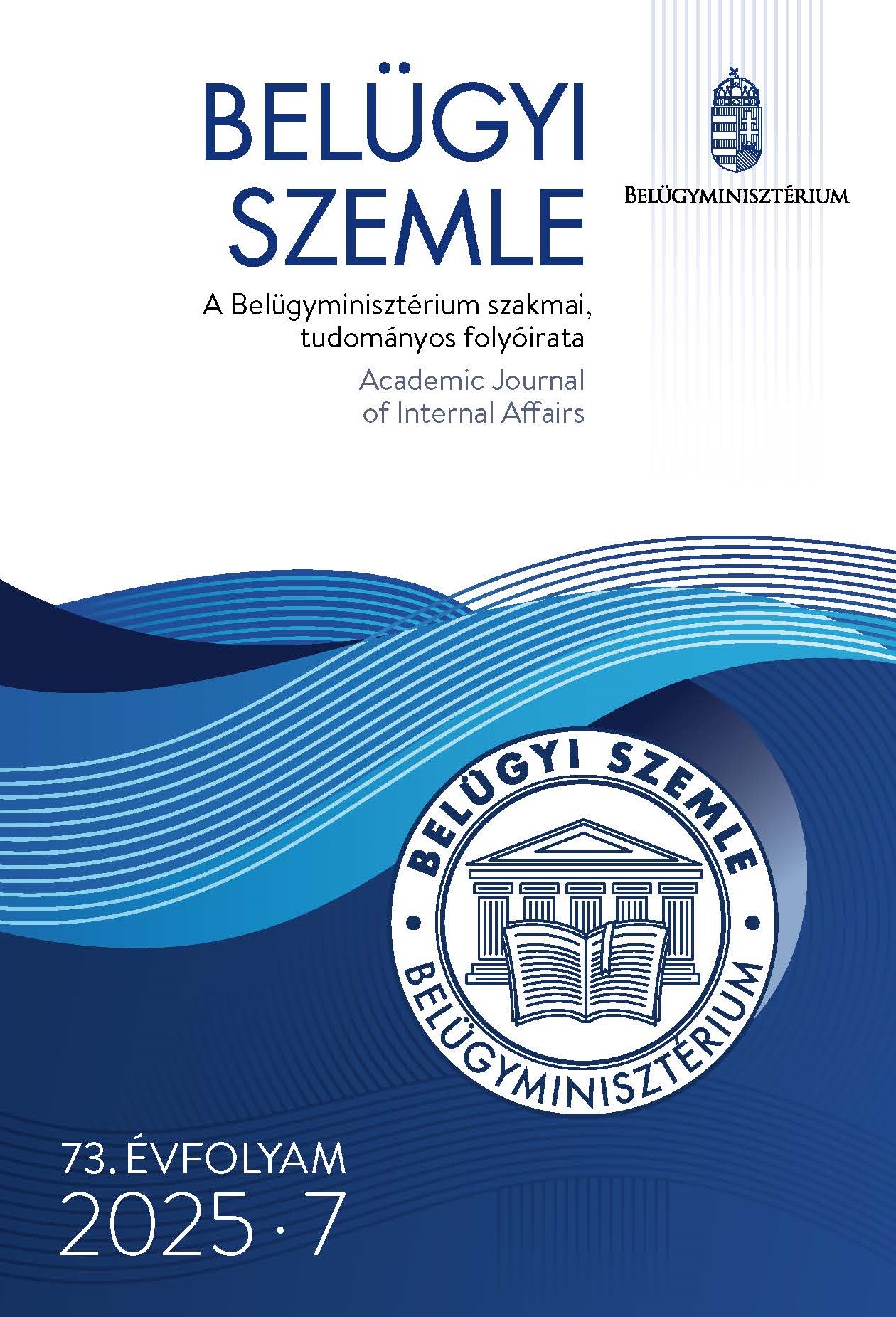Abstract
Aim: In both international and domestic discourse – particularly within the social sciences literature – there is an increasing focus on changes affecting the entire world system and the profound transformation of the global order. The editors of International Law Enforcement Observer have sought to make these qualitative shifts perceptible within the field of law enforcement administration as well. This intention is clearly reflected in the review by Amadé Retek, which presents a study investigating the differences between artificial and natural modes of decision-making.
Methodology: An overview of the selected research areas reveals the methodological approaches that have proven effective. Law enforcement interventions aimed at threat mitigation are characterised, on the one hand, by the monopolistic nature of the authorities’ decisions, while on the other hand, the consequences of such decisions are unpredictable and may become sources of further conflict. This evolving demographic environment has given rise to a phenomenon that quietly yet significantly shapes our collective psyche: demographic anxiety.
Findings: Tamás Pressburger’s report introduces the concept of “demographic anxiety.” The study he presents aimed to explore “what Americans think about current issues such as national security, terrorism, counter-terrorism policies, immigration, and religion.” In particular, white communities perceive themselves as increasingly vulnerable. These fears often lead to demands for the exercise of penal power devoid of any humanity (the acceptance of torturing terrorism suspects evokes the Middle Ages). However, the opportunities of the 21st century may open up alternative paths. Ronett Radvánszki writes that “the data-driven, objective findings of crime analysts could serve as effective complements to police decision-making, potentially contributing to a reduction in crime rates.” Nikiforosz Packosz praises the work of three researchers who describe the difficulties of investigating crimes committed in cyberspace. Olivér Tamás Csiki offers insights into key areas of international cooperation by drawing attention to the threats posed by counterfeiting and piracy (IP crime).
Value: These reviews shed light on certain features of law enforcement administration – particularly criminal investigation – that bring operational and analytical-evaluative fields closer together, thereby fostering a harmony between effectiveness and lawful operation.
References
Brown, E., & Ballucci, D. (2024). Specialized knowledge: Understanding crime analysts' roles and responsibilities and the impact of their work. Criminology & Criminal Justice, 24(1), 3–19. https://doi.org/10.1177/17488958221095980
Edwards, W. D. (1962). Dynamic decision theory and probabilistic information processing. Human Factors, 4(2), 59–73. https://doi.org/10.1177/001872086200400201
European Union Intellectual Property Office, & European Police Office. (2024). Uncovering the ecosystem of intellectual property crime: A focus on enablers and impact. Publications Office. https://doi.org/10.2814/1947113
European Union Intellectual Property Office, & European Police Office. (2024). Uncovering the ecosystem of intellectual property crime: A focus on enablers and impact. Publications Office. https://doi.org/10.2814/1947113
European Union Intellectual Property Office. (2024). EU enforcement of intellectual property rights: Results at the EU border and in the EU internal market 2023. Publications Office. https://www.euipo.europa.eu/en/publications/eu-enforcement-of-iprs-results-at-the-eu-border-and-in-the-eu-internal-market-2022-november-2023
Farkas, J. (2016). The drawbacks of group decision making from a psychological aspect. Magyar Rendészet, 16(2), 67–79.
Farkas, J., & Sallai, J. (2021). 21st century challenges and solutions in the light of history. Security Horizons, 2(4), 273–279.
Klein, G. (1998). Sources of power: How people make decisions. MIT Press.
Klein, G. (2009). Streetlights and shadows: Searching for the keys to adaptive decision making. The MIT Press. https://doi.org/10.7551/mitpress/8369.001.0001
OECD, & European Union Intellectual Property Office. (2021). Global trade in fakes: A worrying threat. OECD Publishing. https://doi.org/10.1787/74c81154-en
Piazza, J. A. (2020). White demographic anxiety and support for torture of terrorism suspects. Studies in Conflict & Terrorism, 43(9), 769–797. https://doi.org/10.1080/1057610X.2020.1792733
van Hardeveld, G. J., Webber, C., & O’Hara, K. (2017). Deviating from the cybercriminal script: Exploring tools of anonymity (mis)used by carders on cryptomarkets. American Behavioral Scientist, 61(5), 539–556. https://doi.org/10.1177/0002764217734271
Weick, K. E., Sutcliffe, K. M., & Obstfeld, D. (1999). Organizing for high reliability: Processes of collective mindfulness. In R. I. Sutton & B. M. Staw (Eds.), Research in organizational behavior (Vol. 21, pp. 81–123). Elsevier Science/JAI Press.

This work is licensed under a Creative Commons Attribution-NonCommercial-NoDerivatives 4.0 International License.
Copyright (c) 2025 Academic Journal of Internal Affairs

